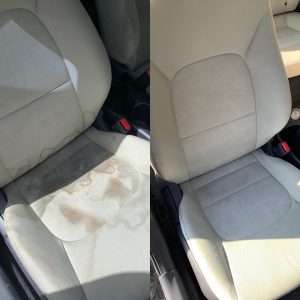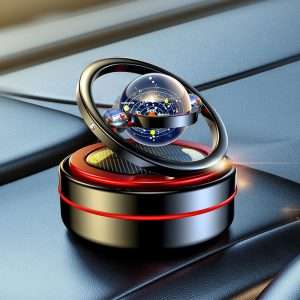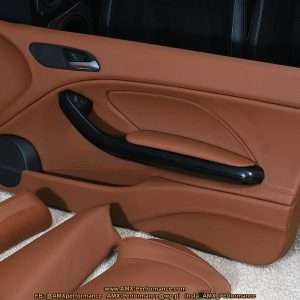Understanding the Problem
Glossy black plastic interiors look fantastic when new. However, they are incredibly prone to scratches. Even gentle cleaning can leave swirl marks. This section explains why this happens and what to avoid.
The plastic is often a softer material. This makes it susceptible to damage from even small particles of dust and dirt. Therefore, careful cleaning techniques are essential.
Essential Tools and Materials
Before you start, gather the right tools. Using the wrong materials can make the scratches worse. Here’s what you’ll need:
- Microfiber cloths (several)
- Detailing spray or interior cleaner
- Plastic polish (specifically for car interiors)
- Applicator pads
- Soft-bristled brush (optional, for tight areas)
Make sure your microfiber cloths are clean. Dirty cloths will only grind dirt into the plastic.
Cleaning the Surface
The first step is to thoroughly clean the surface. This removes any loose dirt and debris. This prevents further scratching during the polishing process.
- Spray the detailing spray onto a clean microfiber cloth.
- Gently wipe the plastic surface.
- Use a separate clean microfiber cloth to dry the surface.
Avoid applying too much pressure. Let the cleaner do the work.
Polishing the Plastic
Now it’s time to polish the plastic. This will help to remove the scratches. Use a plastic polish specifically designed for car interiors.
- Apply a small amount of plastic polish to an applicator pad.
- Gently rub the polish onto the scratched area in a circular motion.
- Continue polishing for several minutes;
- Wipe away any excess polish with a clean microfiber cloth.
Repeat the polishing process if necessary. Some scratches may require multiple applications.
Protecting the Finish
After removing the scratches, protect the finish. This will help prevent future damage. Apply a plastic protectant.
This will create a barrier against dust and dirt. It will also help to maintain the glossy finish.
FAQ: Removing Scratches from Glossy Black Plastic
Will this method work on all types of scratches?
This method is most effective on light to moderate scratches. Deep scratches may require professional repair.
How often should I clean my glossy black plastic interior?
Clean your interior regularly. This prevents the buildup of dust and dirt. Wipe down the surfaces at least once a week.
What should I avoid when cleaning glossy black plastic?
Avoid using harsh chemicals or abrasive cleaners. These can damage the plastic. Also, avoid using paper towels. They can scratch the surface.
Can I use a household polish instead of a plastic polish?
No, do not use household polishes. They are often too abrasive. They can damage the plastic. Always use a polish specifically designed for car interiors.
Beyond the Basics: The Art of the Swirl-Free Shine
So, you’ve banished the blemishes, resurrected the radiance. But the quest for perfection never truly ends, does it? Now, let’s delve into the esoteric art of maintaining that showroom gleam, a realm where mere cleaning transcends into a ritual of automotive adoration.
Think of your glossy black plastic as a delicate canvas. Each wipe, each polish, is a brushstroke in a masterpiece of vehicular vanity. But beware! One wrong move, one errant particle, and the harmony is shattered, leaving behind the dreaded swirl marks – the bane of every detailer’s existence.
The Dance of the Microfiber: A Choreography of Clean
Forget the brute force. Embrace the finesse. The microfiber cloth is your partner in this dance, a soft, absorbent ally against the relentless onslaught of dust and grime. But not all cloths are created equal. Seek out the plush, high-pile varieties, the kind that feel like a cloud caressing your fingertips. These are the ones that will cradle the dirt, not drag it across the surface, etching new imperfections into your pristine plastic.
- The Pre-Wash Ritual: Before each cleaning session, launder your microfiber cloths separately, using a mild detergent and avoiding fabric softeners. These can leave a residue that attracts dust and diminishes the cloth’s absorbency.
- The Folding Technique: Fold your cloth into quarters, creating eight clean surfaces. As one surface becomes soiled, rotate to a fresh one. This maximizes the cloth’s cleaning power and minimizes the risk of scratching.
- The Gentle Glide: Apply minimal pressure. Let the cloth and the cleaning solution do the work. Think of it as a gentle massage, not a vigorous scrubbing.
The Elixir of the Gods: Choosing the Right Cleaning Concoctions
The market is flooded with a bewildering array of cleaning products, each promising miraculous results. But tread carefully, for not all potions are created equal. The wrong formula can strip away the protective layers, leaving your plastic vulnerable to the elements and the inevitable scratches.
Seek out pH-neutral cleaners, specifically designed for automotive interiors. These gentle formulations will lift away dirt and grime without damaging the delicate plastic surface. Avoid products containing harsh chemicals, such as ammonia or bleach, which can cause discoloration and cracking.
Beyond the Spray Bottle: Exploring Alternative Cleaning Solutions
For the truly adventurous detailer, there are alternative cleaning solutions to explore, concoctions that whisper of old-world craftsmanship and natural ingredients.
- Distilled Water and White Vinegar: A classic combination, diluted to a 50/50 ratio, can effectively remove light dirt and grime. The vinegar’s acidity helps to break down stubborn stains, while the distilled water ensures a streak-free finish.
- Castile Soap: A gentle, plant-based soap that can be diluted with water to create a mild cleaning solution. Its natural oils help to moisturize the plastic, preventing it from drying out and cracking.
Remember, experimentation is key. Find the cleaning solution that works best for your specific plastic and your personal preferences. But always err on the side of caution, and test any new product in an inconspicuous area before applying it to the entire surface. After all, you’re not just cleaning your car; you’re preserving a legacy of automotive elegance.
The Shadow Knows: Mastering the Art of Inspection
You’ve cleaned, you’ve polished, you’ve protected. But have you truly seen your work? The naked eye can be deceiving, especially when it comes to glossy black plastic. To truly appreciate the fruits of your labor, you must embrace the power of the shadow.
Find a dimly lit space, a sanctuary where the harsh glare of the sun cannot penetrate. Arm yourself with a powerful flashlight, a beacon of truth in the darkness. Now, slowly and deliberately, shine the light across the surface of the plastic, observing the dance of shadows and reflections.
Unveiling the Microscopic Universe: A Symphony of Imperfections
This is where the magic happens. Under the scrutiny of the flashlight, the microscopic universe of your plastic interior comes alive. Swirl marks, hairline scratches, and even the faintest traces of residue are revealed in stark detail. Don’t be discouraged by what you see. Embrace the imperfections as a testament to the journey, a reminder that even the most meticulously maintained surfaces bear the scars of time.
- The Crosshatch Technique: Shine the light from multiple angles, creating a crosshatch pattern of illumination. This will help to reveal imperfections that might otherwise be hidden.
- The Slow and Steady Approach: Resist the urge to rush. Take your time, and carefully examine every inch of the surface.
- The Power of Patience: Some imperfections may require multiple passes with the flashlight to fully appreciate their extent.
Once you’ve identified the areas that require attention, you can return to the polishing process, focusing your efforts on the specific imperfections that you’ve uncovered. This targeted approach will save you time and effort, and will ultimately result in a more flawless finish.
Beyond the Car: The Glossy Black Plastic Renaissance
The techniques you’ve mastered for your car interior are not limited to the automotive realm. The principles of gentle cleaning, meticulous polishing, and unwavering protection can be applied to a wide range of glossy black plastic surfaces, from electronic devices to household appliances.
Think of your television screen, your gaming console, your kitchen appliances. All of these surfaces are susceptible to scratches and imperfections, and all can benefit from the same care and attention that you lavish upon your car interior.
The Unexpected Applications: A World of Possibilities
The possibilities are endless. With a little creativity and a dash of ingenuity, you can transform the mundane into the magnificent, breathing new life into the everyday objects that surround you.
- Reviving Vintage Electronics: Restore the luster to antique radios, record players, and other vintage electronics with a gentle cleaning and polishing.
- Protecting Gaming Consoles: Shield your gaming consoles from scratches and fingerprints with a regular application of plastic protectant.
- Beautifying Kitchen Appliances: Keep your kitchen appliances looking their best with a weekly wipe-down using a pH-neutral cleaner.
So, embrace the challenge, and let your newfound skills shine. The world of glossy black plastic awaits, ready to be transformed by your touch. Go forth, and create a world of shimmering beauty, one polished surface at a time.




